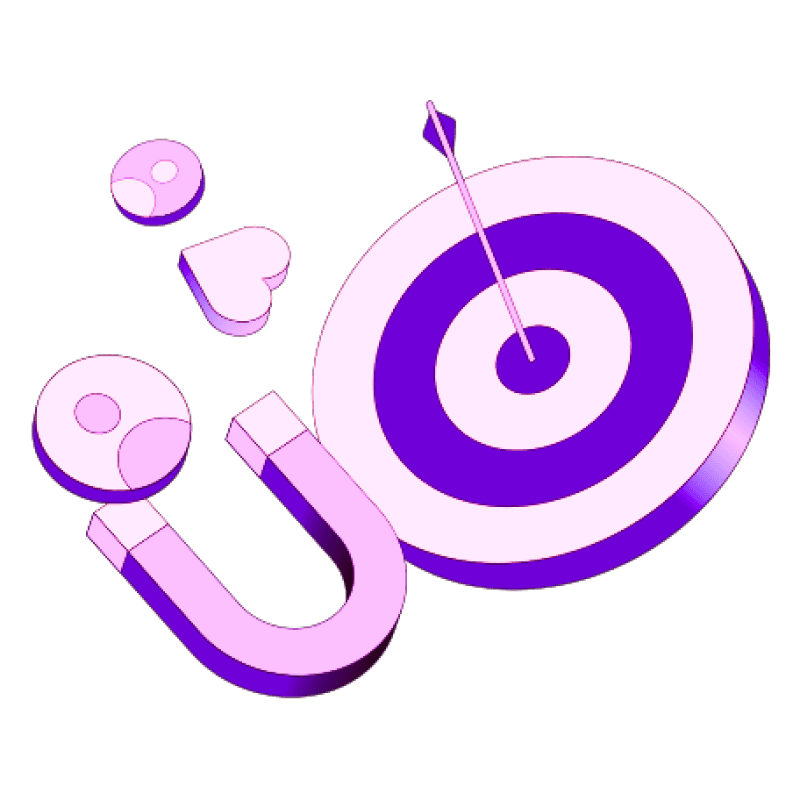Blogs
Articles

Sales Prospecting Techniques: A Step-by-Step Playbook for Closing More Deals
Did you know top sales performers convert 2.7 times more than the average rep? It’s not luck—it’s smart sales prospecting techniques.
Here is where it gets interesting: The majority of salespeople stop reaching out after four to six attempts, but that magic sometimes starts happening at the ninth follow-up. Not to mention that companies that personalize their outreach see over 90% of customers spending more.
So, if you're having trouble getting a hold of decision-makers or just want to convert better, congratulations! You've come to the right place! In this guide, we're going to take you through some proven prospecting methods that actually work in today's fast-paced digital world.
Are you ready to sharpen your skills and close more deals? Let's begin!
What is sales prospecting?
Sales prospecting acts as the foundation of the sales cycle. Sales representatives identify and connect with potential customers who could benefit from their products or services.
This process consists of three key elements. Research gives a full picture of potential customers' business needs and challenges. The qualification stage determines if pursuing a prospect makes business sense based on specific criteria. A strategic outreach then helps create customized pitches for each qualified prospect.
Sales representatives use prospecting to build meaningful relationships with potential buyers and expand their customer base by converting leads into opportunities. These opportunities develop naturally as leads demonstrate real interest and stay involved over time.
A systematic approach helps teams connect with decision-makers effectively. Sales teams gather detailed insights about their prospects' concerns and needs, which allows them to position their products strategically. This positioning creates a steady flow of qualified leads ready to convert.
On top of that, it includes several ways to reach out:
Cold calling and email outreach
Social media engagement
Networking events participation
Content distribution
Direct communication channels
Careful prospecting ensures potential customers get the information needed for informed buying decisions. Sales representatives can focus their resources on promising opportunities that accelerate business growth through targeted strategies.
Why is sales prospecting important in sales?
Research shows that companies generating fewer than 50 new sales opportunities monthly struggle to meet their revenue goals. Sales teams must become skilled at prospecting to stimulate sustainable business growth.
New customer acquisition starts with sales prospecting. Top performers secure 52 sales meetings per 100 target contacts, while other sellers generate only 19 meetings. This substantial difference shows how prospecting excellence relates to sales success.
Consistent prospecting creates remarkable results. 72% of companies with less than 50 new opportunities monthly fail to achieve their revenue targets. Only 4% of businesses generating over 100 monthly opportunities miss their goals.
Sales prospecting offers several advantages for businesses:
Pipeline Sustainability: Regular prospecting will give a steady flow of opportunities that prevents pipeline gaps and revenue fluctuations
Improved Market Intelligence: Each prospect interaction helps learn about customer needs and market trends
Customer Lifetime Value: Better prospecting processes identify prospects who become long-term customers
Competitive Edge: Smart prospecting helps sales teams become trusted advisors instead of mere vendors
The process demands persistence. Sales teams need 18 dials on average to connect with a prospect, and only 25% of sales emails get opened. Success depends on keeping prospecting activities consistent.
Prospecting helps balance natural customer attrition. Businesses lose 15-20% of their customer base yearly. Smart prospecting creates continuous business growth and stable revenue.
What are the types of sales prospecting?
Sales teams need to understand the different approaches to sales prospecting to pick the right strategy that matches their goals. Sales prospecting splits into two categories: inbound and outbound.
Inbound Prospecting
Inbound prospecting attracts potential customers through valuable content and relationship building. Prospects make the first move by connecting with your content, joining webinars, or downloading resources. This strategy creates a smooth system that naturally draws leads to your business.
Inbound prospecting shines because it brings in quality leads. Research shows that inbound prospects come with better awareness and engagement from day one. The method offers expandable and budget-friendly options, though results take time to show.
Key characteristics of inbound prospecting include:
Content-driven lead generation through blogs and resources
Higher prospect engagement levels at first contact
Extended nurturing through educational materials
Strong focus on building expertise
Emphasis on solving prospect problems before selling
Outbound Prospecting
Outbound prospecting takes a direct path where sales representatives reach out to potential customers first. Sales teams connect with prospects who haven't shown prior interest in their products or services.
Many people link outbound prospecting with cold calling, but it covers many strategic approaches. This method works best with high-cost products and precise lead targeting. Outbound prospecting delivers controlled and quick results, making it valuable for businesses that need fast market penetration.
The main difference between these approaches comes down to who starts the conversation. Inbound lets prospects kick off the sales process, while outbound puts sales representatives in the driver's seat. Both methods serve unique purposes and work together to create a complete sales strategy.
How to preparing for effective sales prospecting
Sales prospecting success starts with careful preparation. Your chances of connecting with potential customers improve significantly when you take a well-laid-out approach to prospecting preparation.
Identifying Your Ideal Customer Profile (ICP)
Your ideal customer profile represents companies that get the most value from your products while giving substantial business value in return. A complete ICP has these key components:
Demographics and firmographics data
Geographic location specifications
Psychographic characteristics
Behavioral patterns
Technographic stack details
Company size and revenue metrics
Data shows that 50% of prospects often prove unsuitable for what you're selling. A well-defined ICP helps you focus on companies most likely to convert, which shortens the sales cycle and improves conversion rates.
Setting Realistic Prospecting Goals
Sales teams must line up their prospecting targets with overall business objectives. Research shows that 81.6% of top-performing salespeople spend four or more hours daily on sales-related activities.
Selling strategies in terms of skill assessment: To set proper prospecting goals, there are several indicators that need to be assessed. The current status in relation to the sales cycle should be examined. Thereafter, gauge how much you may want to estimate in terms of prospects by looking at your average lead-to-customer conversion.
Just for example, if you're targeting $50,000 in commissions at a 10% commission rate, that means you need to close out $500,000 of business. If the average deal size is $10,000, you would need to close out 50 deals yearly.
Your proposal-to-close ratio matters too. A 2:1 ratio means you'll need 100 proposals to achieve 50 closed deals. If your conversation-to-meeting ratio is 5:1, plan for 1,500 conversations to secure the meetings you need.
Note that you should review and adjust your goals quarterly to keep them relevant to market conditions and business progress. This ongoing process helps maintain realistic yet challenging targets while adapting to changing business dynamics.
Sales Prospecting Techniques to Boost Success
A multi-channel approach helps you become skilled at sales prospecting techniques. Here are proven methods that get results in today's competitive digital world.
Leveraging Social Media Platforms
There are studies showing social selling has the ability to increase your chance of hitting quota by a whopping 51%. You should figure out which platforms the audience spends their free time on, then go about engaging them through meaningful conversations and valuable content.
Cold Calling with Confidence
Cold calling still works well when done properly, even in this digital age. It typically takes 8 touches to connect and set up meetings with new prospects. The best cold calls start with good research and a confident voice.
Email Outreach Best Practices
Personalized email prospecting gets impressive results. Emails that are highly customized lead to more positive replies and booked meetings. The introduction/hook and value proposition are the two most important parts of prospect emails.
Networking and Referrals
Networking is a powerful tool - 74% of people say meeting face-to-face makes them more likely to buy. Without doubt, real relationships built through industry events and professional connections create valuable opportunities.
Content Marketing to Attract Leads
Content marketing is known to bring in three times as many leads as your typical marketing. Creating valuable, useful content that tells your audience you're a trusted authority is what builds your brand.
Use Video Prospecting
Sales teams that use video see a 16% increase in open rates and 26% higher reply rates. Short, personalized videos work best to maximize engagement.
Account-Based Marketing
Companies using Account-based selling (ABS) are 67% better at closing deals. This method treats high-value accounts as individual markets with highly personalized engagement.
Use LinkedIn Sales Navigator
LinkedIn Sales Navigator enables sales teams to use advanced search with over 40 filters. The tool excels at finding decision-makers and building warm paths into accounts.
Related Article: LinkedIn Sales Navigator alternatives
Implement Lead Scoring
Lead scoring makes sales more efficient through objective prospect ranking. Companies that use lead scoring report better arrangement between sales and marketing teams.
Partner with Complementary Businesses
Strategic collaborations with complementary businesses help reach new markets and improve brand connection. Both parties can discover new markets and improve their service offerings through this approach.
Focus on Behavioral Triggers
Behavioral triggers show you the perfect time to reach out with relevant, personalized content. Sales teams that reach out quickly are substantially more likely to convert leads.
Engage in Online Communities
Online communities are a great way to get leads by showing your expertise and building trust. You can make authentic connections with potential customers while establishing your expertise in these spaces.
How to do sales prospecting with Persana AI?

Persana AI revolutionizes traditional sales prospecting by combining data from 75+ sources with advanced AI capabilities. The platform makes your prospecting workflow quick and efficient through automated lead generation and enrichment.
Analytical insights are the foundations of Persana AI's functionality. Sales teams connect to multiple databases through this platform at a fraction of the cost and time of manual research. This all-encompassing approach will give a complete view of prospect information.
The platform's AI-driven personalization operates continuously. It reduces sales cycle time by up to 65% and increases conversion rates by 30%. The system captures and unifies every signal throughout the buyer's experience. It automates workflow using sophisticated triggers and sends live alerts when prospects change roles.
Sales teams have seen remarkable results with Persana AI:
10x improvement in productivity
Less time spent on manual prospecting
Better quality lead generation
More personalized outreach
The platform merges with popular outbound tools that make the entire prospecting process more effective. Results show that early adopters can keep their existing sales platforms while adding AI-powered prospecting benefits.
Persana AI helps GTM teams overcome common prospecting challenges. We automated manual tasks like compiling prospect lists and conducting outreach. Sales teams can now focus on their strengths - building relationships and closing deals.
Conclusion
Sales prospecting plays a vital role in business growth and revenue generation. Today's sales teams must blend traditional techniques with advanced tools to excel in the competitive market.
Sales professionals who master prospecting methods from social selling to content marketing create multiple touchpoints with potential customers. Teams that combine these techniques with proper preparation and clear goals achieve better results.
Modern AI-powered solutions have made prospecting quicker than ever before. Begin your trip to smarter prospecting with Persana AI to streamline your sales process with automated lead generation and tailored outreach.
Successful prospecting needs persistence, strategic planning, and the right tools. Top performers connect with prospects after multiple attempts and keep their prospecting activities consistent. Your dedication to improving these techniques and adopting new technologies will boost conversions and stimulate business growth.
FAQ
Sales prospecting success depends on the right tools and tracking methods. Let's explore what you need to take your prospecting game to the next level.
What are the tools you can utilize for sales prospecting?
A reliable CRM system forms the backbone of effective prospecting. Teams can capture leads and track interactions efficiently in one place. Successful teams combine these essential tools:
Marketing automation software for lead nurturing
Data analytics platforms for insight generation
Social media management tools to connect with prospects
Email marketing software for outreach
What are the important metrics to track for Sales prospecting?
Your conversion rate shows how many leads become customers - this metric matters most. These other vital metrics need tracking too:
Lead response time
Number of new opportunities
Percentage of qualified leads
Lead source effectiveness
How to measure the success of prospecting efforts?
Quality prospect throughput is a vital indicator that measures your prospect sourcing process quality and speed. Reply-to-connect rates should hit 1% to 2% as your baseline performance.
How to improve the conversion rate of sales prospecting?
Personalization works wonders - 97% of marketers report improved outcomes with this approach. These strategies can boost your results:
AI chatbots can enhance customer service
Multiple payment options help close deals
Genuine urgency in offers drives action
What are common mistakes to avoid in sales prospecting?
About 40% of salespeople call prospecting their biggest challenge. Watch out for these common pitfalls:
Poor prospect research
Generic messaging - personalization can boost revenue by 40%
Selling instead of adding value
Early surrender - winning connections need 9+ attempts
Random prospecting schedules - block specific time for this work

Create Your Free Persana Account Today
Join 5000+ GTM leaders who are using Persana for their outbound needs.
How Persana increases your sales results
One of the most effective ways to ensure sales cycle consistency is by using AI-driven automation. A solution like Persana, and its AI SDR - Nia, helps you streamline significant parts of your sales process, including prospecting, outreach personalization, and follow-up.



